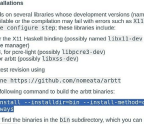Flavours, spins, upgrades

Besides the flagship desktop offerings, there are a number of other official editions of Fedora and Ubuntu that you might be interested in. For fun and games (although it actually wasn’t fun at all) we tried installing both OSes on an old machine that, with its 2GB RAM and ancient (but still 64-bit) Celeron processor, fell well below the recommended specifications.
Once the installs were complete (which took ages because cheap laptop hard drives of the early 2010s are not fast), both OSes were surprisingly useable. But what turned out to be much more useable was working with the LXQt-powered flavour of each. Gnome had a fairly large, but not surprising given its reputation as the fattest desktop environment, 700MB memory footprint. LXQt had a much more
You’re reading a preview, subscribe to read more.
Start your free 30 days





